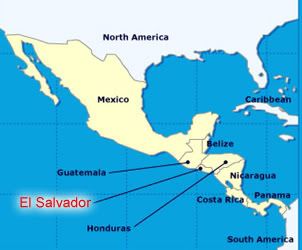While we were in the village I gave up taking notes. I understood very little of the Spanish COO people were speaking, and I had begun to question Margaret and Tom’s translations and comments. I still believe that unscripted conversations might have been possible for me, given more opportunity.
I didn’t take photos in the village, either. Others in our group were snapping away and I didn’t want to ask people to keep on posing in the heat. I have only my foggy memory to lead me through the days we spent in the campo. What surfaces are mainly images, and a couple of unfiltered conversations.
The van didn’t languish while we were in the village. Except during official “time with hosting families,” Margaret and Tom kept us moving.
Arturo accompanied us on these local trips. Arturo was his “war name”; I never learned his real one. He farmed in COO and had served on the directiva, but now he was working with a regional grass-roots group. He is one of the images I brought home—a big, strong and smart man who was also mild-mannered and committed to the slow process of talking with his neighbors.
The van broke down during one of our day trips, and while we were waiting for Faustino to give us a prognosis, Arturo and Tom discussed the war and the peace in El Salvador.
“We never did a better thing than when we attacked the rich,” Arturo said in English. Somewhere along the line he’d learned it, but not, I think, in school. “They were fine with killing us in our villages, but they didn’t want a war on their doorsteps.”
“I don’t believe in violence,” Margaret said. “I’m a pacifist.”
“There’s plenty of violence in the Bible,” said Tom. “All that smiting.”
With Arturo we visited a coffee cooperative, where I saw the deepest poverty of the trip. The 2001 earthquake had destroyed many homes there and made the school unusable. New shelters were slowly going up, and children were out wandering barefoot among the hammers and nails. Tom and Margaret told us that these growers were nonetheless better off than most on privately owned plantations. At least the people here were still working. With help from the IMF, other countries—Vietnam, in particular, I later learned—were growing coffee cheaper and in larger quantities than El Salvador could.
We visited craft and cattle cooperatives, micro-lending operations conducted by women for women with funding from our group and others. One of the union organizers who spoke to us in the capitol said that central San Salvador was “a cemetery of microenterprises.” The operations in the campo appeared to be doing well. In the case of the cattle cooperative, a woman was loaned enough money to buy a calf and taught how to raise it. When she sold it and repaid the loan, she made a small profit and reinvested.
“It’s important to give the money to the women,” Margaret said, “because the men might use it some other way.”
On one of these days we visited a village hit hard by the earthquake. Because it was governed by the right-wing ARENA party, Margaret and Tom prepared us to see it as backward and disunited. And sure enough, when we visited the school, one of the teachers asked Margaret for funding—for earthquake reconstruction, I think. The teacher asked out of the blue, without asking first if she could ask, I guess.
“She shouldn’t have done that,” Tom said afterward.
“I figured that out all by myself, Tom.” I empathized with the woman. Maybe she was an introvert like me, given to blurting things out. Maybe she hadn’t figured out the etiquette because no one had explained it to her.
This village—I think it was this one—was situated in a tiny valley not far from a garbage dump. An enormous tree, a hundred feet high and nearly as wide stood in its center. We spotted the tree from the ridge above before we made out any village buildings. I’m picturing a sycamore, with wide leaves, but maybe that’s because there was a sycamore in the backyard of my childhood home. The village tree still shows up in my dreams. Its shade protects. It’s a tree of life.
We were still driving back to COO one night when dark fell, on a dirt road past a row of houses. One house was lit up like a store, door and window wide open. I caught a glimpse of a casket and a party of people dressed up, some in lace. I remember the body as dressed in lace, too--black lace—although I couldn’t have seen it from the van.





